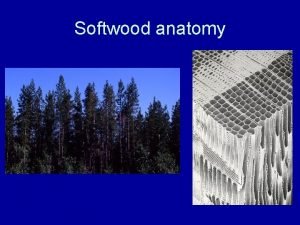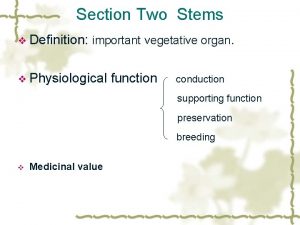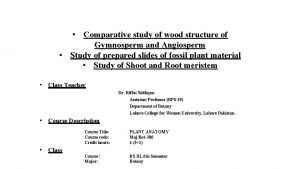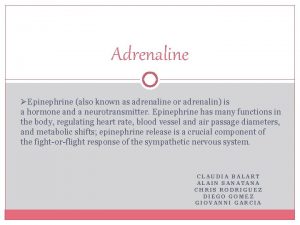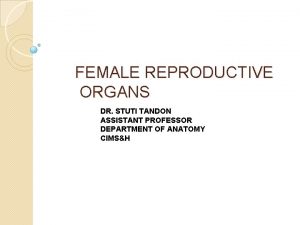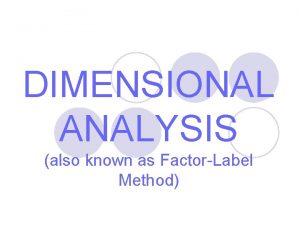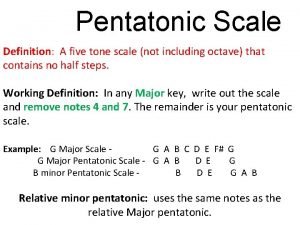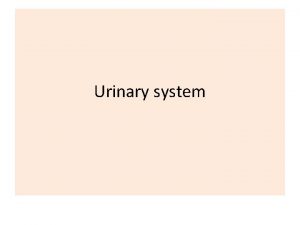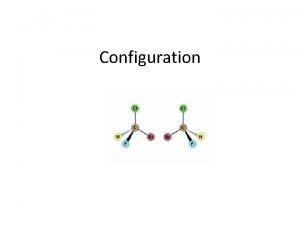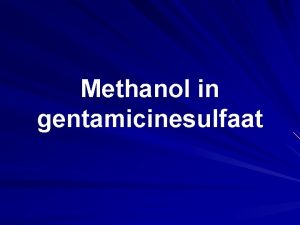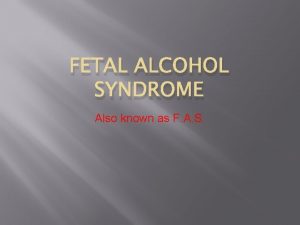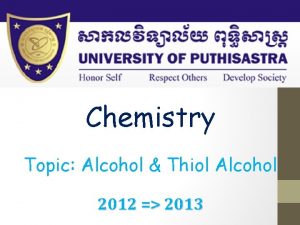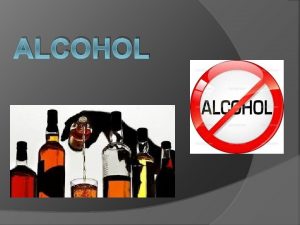Methanol Toxicity Methanol also known as wood alcohol


































- Slides: 34


Methanol Toxicity Methanol, also known as wood alcohol

• Methanol has a relatively low toxicity • The adverse effects are thought to be from the accumulation of formic acid, a metabolite of methanol metabolism.

Upon ingestion, methanol is quickly absorbed • in the gastrointestinal tract and metabolized in the liver. In the first step of degradation, methanol is • transformed into formaldehyde via the enzyme alcohol dehydrogenase (ADH).

Formic acid is further oxidized to carbon • dioxide and water in the presence of tetrahydrofolate The metabolism of formic acid is very slow; • thus, formic acid often accumulates in the body, which results in metabolic acidosis

Optic nerve demyelination has been reported • to be due to formic acid destruction of myelin Little to no change is seen in the retina. •

Methanol also affects the basal ganglia. • As a result of this damage, patients can • develop parkinsonism or other dystonic/hypokinetic clinical pictures

At-risk populations • 1 - Accidental overdose can be seen in children • 2 -Persons with alcoholism - These individuals commonly consume methanol as a substitute for ethanol • 3 -In many parts of the developing world, methanol is often a component of "bootlegged alcohol, " which is made in rural regions; because of its low cost, it is often consumed by members of lower socioeconomic classes • 4 - In the industrial setting, the inhalation of methanol fumes poses a health risk

• Methanol blood levels peak at 30 -90 minutes following ingestion






Neurologic manifestations • Disinhibition and ataxia. • A latent period • Headache, nausea, vomiting, or epigastric pain. In later stages, drowsiness may rapidly progress to obtundation and coma. • Seizures may occur, generally as a complication of the metabolic derangement or as a result of damage to the brain parenchyma.

Vision loss • initially may present with diminished visual acuity • progress to scotomata and scintillations. • The frank blindness that develops sometimes responds to immediate therapy; however, complete loss of vision is a common

In cases of altered mental status and • intentional overdose, the diagnosis of methanol intoxication may be difficult without a high clinical index of suspicion.

Signs are related to metabolic acidosis; Tachycardia • Tachypnea • Hypertension • Altered mental status. • Pulmonary edema and acute respiratory • distress may ensue, requiring intubation.

• Optic disc hyperemia occurs early in the course of methanol intoxication. Pupillary response to light is compromised and, subsequently, is lost. • Little or no retinal damage is observed.







Workup • • • Renal profile Serum amylase Serum methanol ROUTINE laboratory test CT scanning MRI

Treatment • Supportive therapy is aimed at initiating airway management, correcting electrolyte disturbances, and providing adequate hydration. • Metabolic acidosis in methanol poisoning may necessitate the administration of bicarbonate and assisted ventilation. Bicarbonate potentially may reverse visual deficits. In addition, bicarbonate may help to decrease the amount of active formic acid.

Antidote therapy • Ethanol or Fomepizole, • Like methanol, ethanol is metabolized by ADH, but the enzyme’s affinity for ethanol is 10 -20 times higher than it is for methanol.

• Fomepizole is also metabolized by ADH; however, its use is limited because of high cost and lack of availability

Indications for. Hemodialysis (1)- Greater than 30 m. L of methanol ingested, (2) -Serum methanol level greater than 20 mg/d. L (3)- Observation of visual complications (4) -No improvement in acidosis despite repeated sodium bicarbonate infusions. • 5 - کﺎﻫﺶ ﺳﻄﺢ ﻫﻮﺷیﺎﺭی • 6 - ﻧﺎﺭﺳﺎیی کﻠیﻪ • 7 - ﺑﺪﺗﺮ ﺷﺪﻥ ﺣﺎﻝ ﺑیﻤﺎﺭ ﻋﻼﺭﻏﻢ ﺩﺭﻣﺎﻥ • •

ﺩﺭﻣﺎﻥ ﺑﺎ ﺍﺗﺎﻧﻮﻝ • 1 ml/kg/w: 10 -20 %ethanol, louding dose • 0/16 ml/kg/q 1 h. oral or NGT. maintenance • Durin dialysis double maintanance dose



 Alcohol toxicity
Alcohol toxicity Primary alcohol vs secondary alcohol
Primary alcohol vs secondary alcohol Primary alcohol secondary alcohol
Primary alcohol secondary alcohol Softwood anatomy
Softwood anatomy Wood wood teenager
Wood wood teenager Roots vegetative propagation
Roots vegetative propagation Angiosperm wood vs gymnosperm wood
Angiosperm wood vs gymnosperm wood Wood sawed wood old tongue twister
Wood sawed wood old tongue twister Adrenalin is a
Adrenalin is a What is the path followed by a projectile
What is the path followed by a projectile Which of these is also known as look-head lr parser?
Which of these is also known as look-head lr parser? Opportunity cost method of human resource accounting
Opportunity cost method of human resource accounting Republic act no.10912
Republic act no.10912 Scan conversion and rasterization
Scan conversion and rasterization Parameterized abstract data types
Parameterized abstract data types Weber's location model
Weber's location model Auditing through the computer is also known as
Auditing through the computer is also known as Supply air throttling is the method of speed control of
Supply air throttling is the method of speed control of Lower esophageal sphincter is also known as
Lower esophageal sphincter is also known as Orthographic view
Orthographic view Definitiveness of ethical human conduct
Definitiveness of ethical human conduct Fertilization ampulla
Fertilization ampulla Bit and byte stuffing
Bit and byte stuffing The stack frame inside a procedure is also known as the
The stack frame inside a procedure is also known as the Multi step dimensional analysis
Multi step dimensional analysis Five tone
Five tone Jeopardy quotes
Jeopardy quotes Voldemort also known as
Voldemort also known as Proximal convoluted tubule histology
Proximal convoluted tubule histology Non superimposable mirror images are
Non superimposable mirror images are Inverters are also known as
Inverters are also known as Ambulatory outpatient is
Ambulatory outpatient is I suppose
I suppose Software is also known as
Software is also known as Cycloidal teeth
Cycloidal teeth



